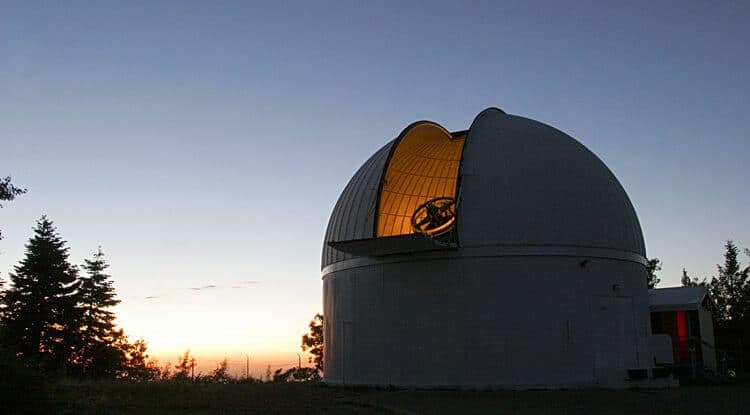The ultimate fate of most near-Earth objects, or NEOs — asteroids and comets that may pose a hazard to Earth — has been thought to be a collision with the sun. However, a new study published in the journal Nature found that most asteroids are destroyed long before a collision can occur.
An international team of researchers from Finland, France, the United States and the Czech Republic set out to construct an updated model of the NEO population that describes their orbit and size distributions. Such a model is important for planning future asteroid surveys and spacecraft missions, as well as assessing the remaining threat from asteroid impacts.
The team used the properties of almost 9,000 NEOs detected in about 100,000 images obtained by the most successful asteroid survey of the past decade, the University of Arizona’s Catalina Sky Survey, to construct its new model. To do so, it first needed to carefully analyze the Catalina data to remove observational biases. The team then combined the data with theoretical assumptions of the orbit distributions of NEOs to produce the best-ever model of the NEO population.
It quickly noticed a problem, however: The new model predicted that Catalina should have found about 5 percent more NEOs than reported. Furthermore, the missing objects were all in orbits that closely approached the sun. The team spent almost a year verifying its calculations before coming to the conclusion that the problem wasn’t in its analysis and that the predicted NEOs weren’t there.
Mikael Granvik, the lead author of the Nature article, suggested that its model would better match the observations if NEOs were destroyed long before a collision with the sun. When the team adjusted its model to assume that asteroids spending too much time within about 9 million miles of the sun are destroyed, it found agreement between its model’s prediction and observations.
Such results highlight the value of “spinoff” science from the Catalina Sky Survey. With its many terabytes of image data taken since 2005, the Catalina archive has been used to discover transient optical phenomena such as supernovae, exploding galaxies and thousands of new variable stars.
Eric Christensen, Catalina’s principal investigator, reflected on this role: “This latest result is another example of how the Catalina Sky Survey acts as a resource that goes well beyond our mission of searching for hazardous asteroids. It is gratifying when our work has additional value to investigations like this.”
The new discovery also helps to explain observational discrepancies in the distribution of small objects in our solar system. Meteors, or shooting stars, are tiny bits of dust and rock dislodged from the surfaces of asteroids and comets. The particles travel in “streams” that follow the path of their parent objects.
One problem was that most of the meteor streams that closely approach the sun could not be associated with any known objects. This could be explained by their parent objects being destroyed when they came too close to the sun, leaving behind only streams of meteoritic material.
The Nature article also shows that darker objects are destroyed farther from the sun than brighter objects. This explains the observation that NEOs that come closer to the sun typically are brighter than those that remain farther away. The darker, closer objects have been destroyed.
“This study shows that physical processes and population statistics have to be considered simultaneously in order to take full advantage of the wealth of data produced by asteroid surveys,” Granvik said. “It is now possible to probe asteroid interiors by keeping track of their orbits and sizes.”

